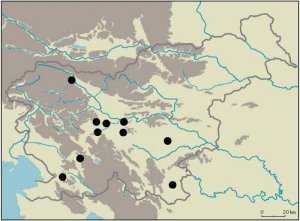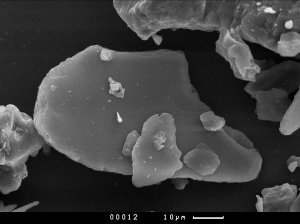Microscopic biological remains in cultural layers of Slovenian archaeological sites as a tool for palaeoenvironmental reconstructions
-
Principal Investigator at ZRC SAZU
Maja Andrič, PhD Project Team
Tjaša Tolar, PhD, Jana Horvat, PhD, O. Khokhlova, Anton Velušček, PhD-
Project ID
BI-RU/05-07-012
-
Duration
1 January 2005–31 December 2007 -
Project Leader
Alexandra Golyeva
Partners
Mihael Budja, PhD, Oddelek za arheologijo, Filozofska fakulteta Univerze v Ljub…, Mija Ogrin, Gorenjski muzej, Kranj, Phil Mason, PhD, Zavod RS za varstvo kulturne dediščine, OE Novo mesto
This project, which started as a pilot study (The development of Slovenian cultural landscape: a comparison of phytolith and pollen record, bilateral Slovenian-Russian research project) aims to investigate the Holocene vegetation development and (cultural) plants and building material brought to Slovenian archaeological settlements by people. In order to investigate pollen and phytolith record in cultural layers of various archaeological sites, research is being carried out at following locations: Ljubljansko barje region (Blatna Brezovica, Maharski prekop and Stare gmajne sites), Bela krajina region (Črnomelj), Sežanski kras (Mala Triglavca) and Pokljuka (Klek, pedological profiles in the vicinity of archaeological sites).

What is the main advantage of combined, pollen-phytolith analysis? By using these complementary research techniques, we can gain more detailed information about the past environment and economy. Phytoliths form in various plant tissues and can be deposited directly into archaeological cultural layer. Since they consist of inorganic material (SiO2), they are very resistant to microbial decay and can survive in dry environment, characteristic for most archaeological sites.

Phytolith analysis is very rarely carried out on archaeological sites in Europe (it is something completely new for Slovenian archaeology), therefore some links to phytolith web pages are provided below.
Links
- Central reference: Marco Madella phytolith web page
(www.phytolith.net) - Phytolith Database: The University of Missouri Phytolith Database
(http://web.missouri.edu/~umcasphyto/index.shtml) - Phytolith images: Terry Ball phytolith web page
(http://webpub.byu.net/tbb/)